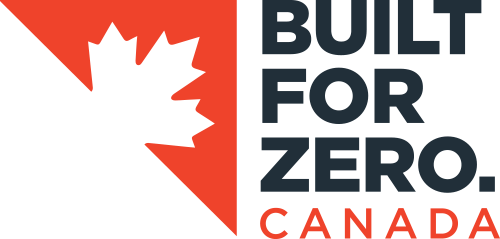Getting Started
In this section, you’ll find materials and resources to help you understand the scope of what a Registry Week entails and plan for each step in the process.
How to Begin
- If you haven’t already, please take some time to read through the campaign website. Check out the Built for Zero Overview.
- Review the training presentations, community presentations and videos below for an overview of what a Registry Week looks like. Read the Registry Week Agenda to understand the flow of a Registry Week.
- Make sure you have clarity on your campaign leadership. Recruit a project manager to oversee your Registry Week. It is nearly impossible in most communities to plan and organize a Registry Week off the corner of your desk; you will want to identify a project manager who can be dedicated to the task for 8 to 10 weeks. Most communities will also put together some form of leadership committee. Please see the section Building a Strong Local Team for more information on this.
- Review the Registry Week Prep Checklist. Read this through carefully and note the suggested timing of different steps in the planning and implementation process. Use the Registry Week Planning and Action Idea Chart to jot down the ideas you like as your review the Registry Week Toolkit and/or brainstorm ideas for the various components of your Registry Week.
- Determine how you will stay on task and meet your deadlines. There are a variety of tools that can help you plan for this. Please see the following sample templates and work plans: Hamilton Registry Week Workplan Template, Waterloo Region Registry Week Checklist, Ottawa Checklist Critical Path, San Diego Logistics Planning Spreadsheet.
- Think about your housing and advocacy objectives for the campaign. What do you want your campaign to achieve? What is your housing goal? How can you use the campaign to advance your advocacy goals (for example bring new partners to the table; encourage federal or provincial investment in housing)? Please see the section Lining Up Housing for more information on this.
- We are building a movement! Movement building means reaching out to Canadians from all walks of life, getting them to care, getting their support and most importantly, getting them to take action in support of ending homelessness. Communication is an integral part of a Registry Week. The Public Relations Toolkit is designed to support your local campaign communications and community mobilization efforts before, during and after your Registry Week. The toolkit includes campaign backgrounders, suggested messaging, FAQs, a range of templates as well as some advice on media relations, social media and more.
- Craft key messages for your campaign. In the coming weeks you will certainly be answering a lot of questions related to your Registry Week. We have included communication examples from Hamilton, Ottawa and Waterloo Region.
- Consider how you will reach out and include different population groups in your planning and surveying.
Registry Week Prep Checklist
This checklist that will help you manage tasks for the weeks leading up to your Registry Week
Downloads
Overview
- Registry Week Agenda (PDF)
- See what a Registry Week looks like – check out the list of Registry Week videos in the Video Library
- See also Point-In-Time Count Courses on the Homelessness Learning Hub and the Count Overview (PowerPoint) from COH
-
Quick Registry Week Training Overview:
Planning Tools
- Registry Week Prep Checklist (Word)
- Registry Week Planning and Action Idea Chart (Word)
- Hamilton Registry Week Work Plan Template (Word)
- Ottawa Checklist Critical Path (Word)
- Waterloo Region Registry Week Checklist (Word)
- San Diego Logistics Planning Spreadsheet (Excel)
Key Messages, FAQ’s and Fact Sheets
- Waterloo Region General Key Messages for Registry Week (Word)
- Waterloo Region Registry Week Key Messages for Housing Stability System – Why Doing (Word)
- Hamilton Registry Week Key Messages FAQ (Word)
- Hamilton Registry Week Fact Sheet (Word)
- Ottawa Registry Week Media and Spokespersons Q&A (Word)
- Public Relations Toolkit
Considerations for Reaching Different Population Groups
- See the PiT Planning Course in the Homelessness Learning Hub – covering youth, Indigenous and sexual diversity
- See the PiT Preparation Course in the Homelessness Learning Hub – covering inclusion of LGBTQ2S and women
- Engaging Domestic Violence Partners (from HUD for US 2020 PiT Count)
- Guidance for Domestic Violence Partners and CoCs on Participating in the PIT Count
- Partnering with CoCs on the PIT Count: What Domestic Violence Providers Need to Know
- Engaging with Domestic Violence Survivors: What CoCs Need to Know
- Point-in-Time Count Fact Sheet on Identifying Survivors of Domestic Violence
Back: Toolkit Overview
Next: 2 – Building a Strong Local Team
